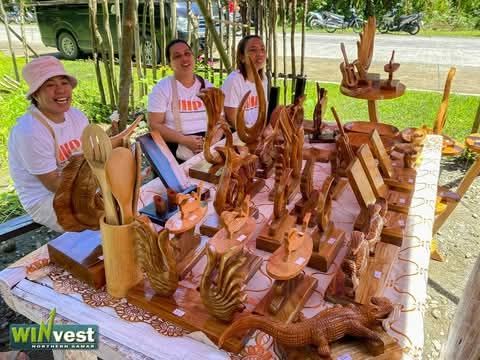The inauguration of the Anito Handicraft Producers Association’s (AHPA) new wooden handicraft production facility on November 17 was more than a ribbon-cutting ceremony.
It is, in many ways, a cultural pivot and a deliberate turn toward survival and relevance in a world that no longer rewards artisans who cling too tightly to tradition.
Made possible through a PHP1.49 million grant from the Department of Labor and Employment’s Integrated Livelihood Program, the facility represents both an opportunity and a challenge.
As Provincial Economic Development and Investment Promotions Office (PEDIPO) head Jhon Allen Berbon said, the support has enabled AHPA to shift from crafting large wooden carvings to producing smaller, market-ready goods such as keychains, utensils, souvenirs, and decorative pieces.
These items are indeed easier to produce, cheaper to transport, and in high demand as Northern Samar’s tourism sector accelerates.
But this shift also signals an uncomfortable truth and that is that the era of massive, painstaking wood sculptures may be fading, not for lack of skill, but for lack of a market willing to pay for them.
Still, the move feels pragmatic rather than defeatist.
Gamay Mayor Timoteo Capoquian Jr. praised the artisans of Anito village for adapting to changing industry trends while preserving the essence of their craft.
His commendation recognizes a bigger story: Gamay’s woodcarvers have always been the quiet custodians of the town’s cultural identity, shaping bamboo, mango, coconut, kamagong, and hanagasi wood into statues, furniture, and functional art.
Their creations once defined local craftsmanship; now, they must redefine it.
The recent training conducted by PEDIPO for Anito village woodcarvers reflects this necessary evolution.
By equipping artisans with updated techniques to enhance design, durability, and marketability, the program acknowledges that tradition alone cannot sustain a livelihood.
Innovation, even on a small, hand-carved scale, is the new lifeline.
Some may lament the shift toward smaller souvenirs as a dilution of heritage.
But perhaps it is the opposite and in fact a strategic preservation.
By meeting contemporary demand, AHPA ensures that the skills passed down for generations do not vanish into nostalgia but instead find new life in the hands of tourists, collectors, and everyday users.
In truth, the facility is not just producing wooden goods.
It is carving out a future, one where heritage and practicality coexist, where tradition bends but does not break, and where the artisans of Anito village continue to shape not only wood but the identity of their community.
#WeTakeAStand #OpinYon #OpinYonNews
